By Alessandra Ressa
Located just off the village of Ternova, near Samatorza, along the Italian – Slovenian border, Trieste’s water cave (Grotta dell’Acqua) is a hidden jewel for expert and novice speleologists.
Its crystal clear and emerald water pools, many of which are terraced and surrounded by white concretion, are the marvelous karstic result of millennial erosion.
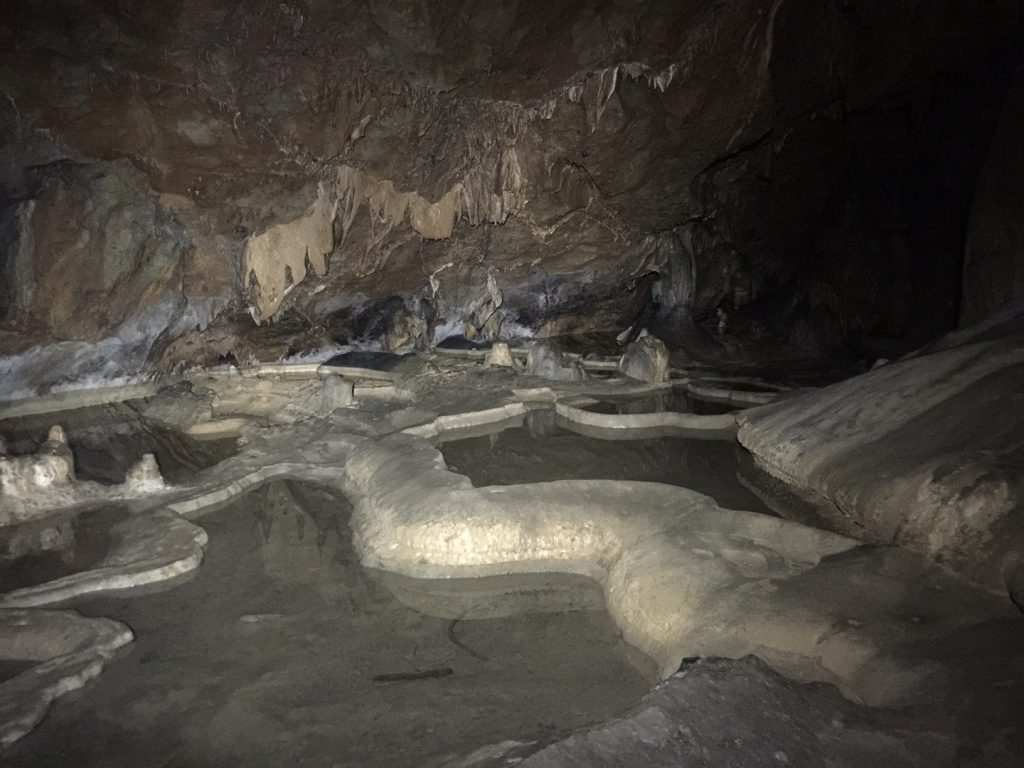
Because its entrance is literally a couple of meters away from the Slovenian border, along the line where the Iron Curtain separated the former Yugoslavia from Italy, for decades Trieste’s speleologists risked arrest and incarceration in order to visit it. Much feared were the Yugoslav Federal Army guards, known as graniciari, who patrolled the border incessantly looking for trespassers.

As the border along Carso wasn’t properly defined (much like today’s border with Slovenia that mainly runs through the woods), it was very common for Trieste’s residents to inadvertently trespass while picking edible mushrooms or wild asparagus.
The pitiless Yugoslavian border patrol, often accompanied by barking German shepherds, would yell “Stoj!” and point their rifles. The unfortunate trespassers would then be identified and taken to the nearest army station in Koper, and usually released the following day after a sleepless night. But of course they came home with a good story to tell.
Any Trieste resident over 50 has a story on border violation and consequences, be it accidental or intentional. Triestini would intentionally trespass to smuggle meat, grappa and gasoline to Trieste, because it was cheaper on the Yugoslavian side. Some Triestini even got shot at, and a few didn’t survive to tell.
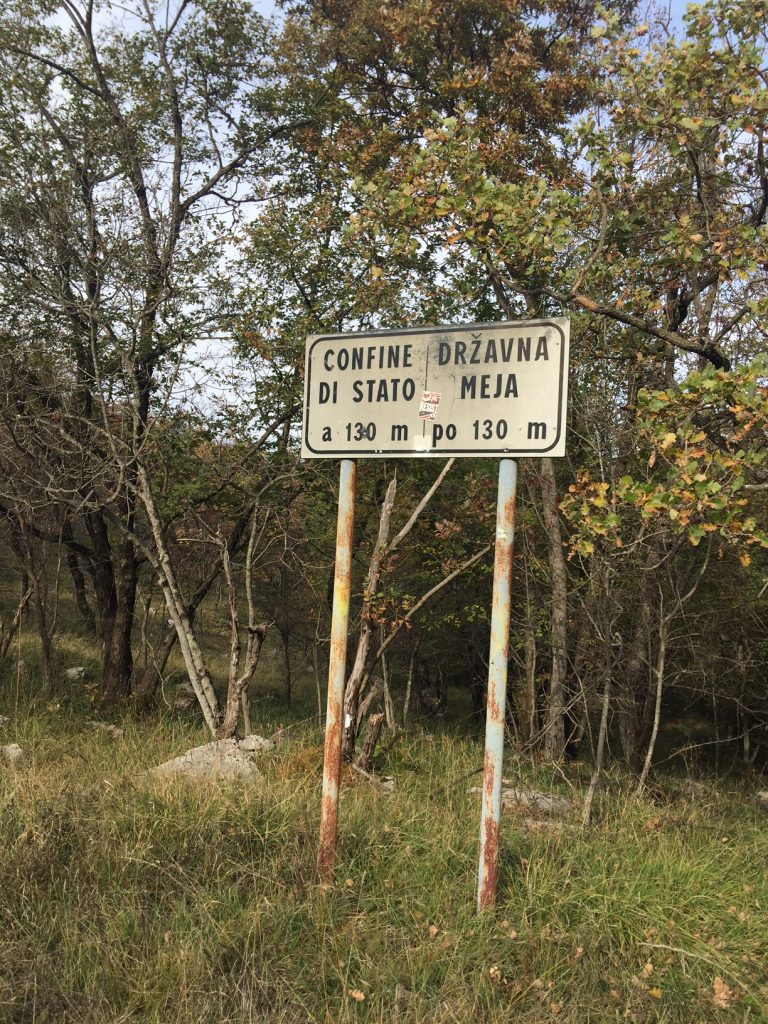
Former Yugoslav leader Tito believed in the geographical relocation of his troops to avoid personal interests or ethnic, religious or regional partisanship, thus graniciari came from remote areas of Yugoslavia and did not speak a word of Italian.
This did not help with the fraternization along the borders and greatly contributed to the atmosphere of fear and mistrust felt by Triestini in the years that followed World War II and the Cold War.

Life for Trieste’s speleologists has greatly improved after Slovenia entered the E.U. and country borders became a thing of the past. Although the epidemic has temporarily forced Slovenia to limit access to the country (some physical borders, much criticized by Triestini, had in fact reappeared during lockdown last spring), walking in the woods along the frontier is safe and enjoyable today, although not as thrilling as in the past.
The contended cave was officially declared part of the Italian territory only in 1959. This however did not prevent Yugoslavian graniciari from harassing visitors until Slovenia’s independence in 1991, during Yogoslavia’s blood-soaked war.
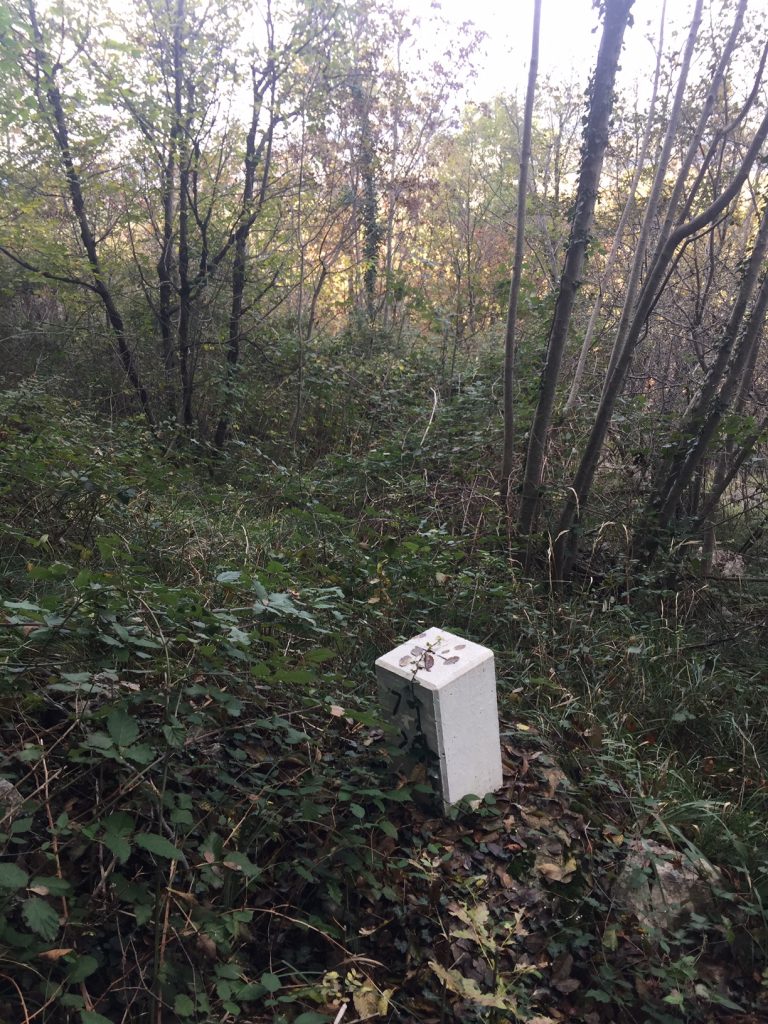
Just a few meters away from the cave, on each side of the forest path, you can see the stones indicating Italian and Slovenian territory very close to one another.
Grotta dell’Acqua is also known by its less used name Grotta del Boriano or Grotta dei Partigiani.
As there are no dangerous vertical sections, all you need are good hiking shoes (it’s quite slippery), a helmet and a good flashlight.
To reach the cave from the Italian side, take path number 3 from Ternova village and follow it. You will pass a bridge like bend with an ancient circular basin, probably for water collection.

On your right, you will see the more popular cave Grotta di Ternovizza, with its deep vertical drop, complete with Austrian WWI tunnels, rooms and shelters for troops (you can visit the artificial entrance but you will need special equipment for the natural cave further ahead).
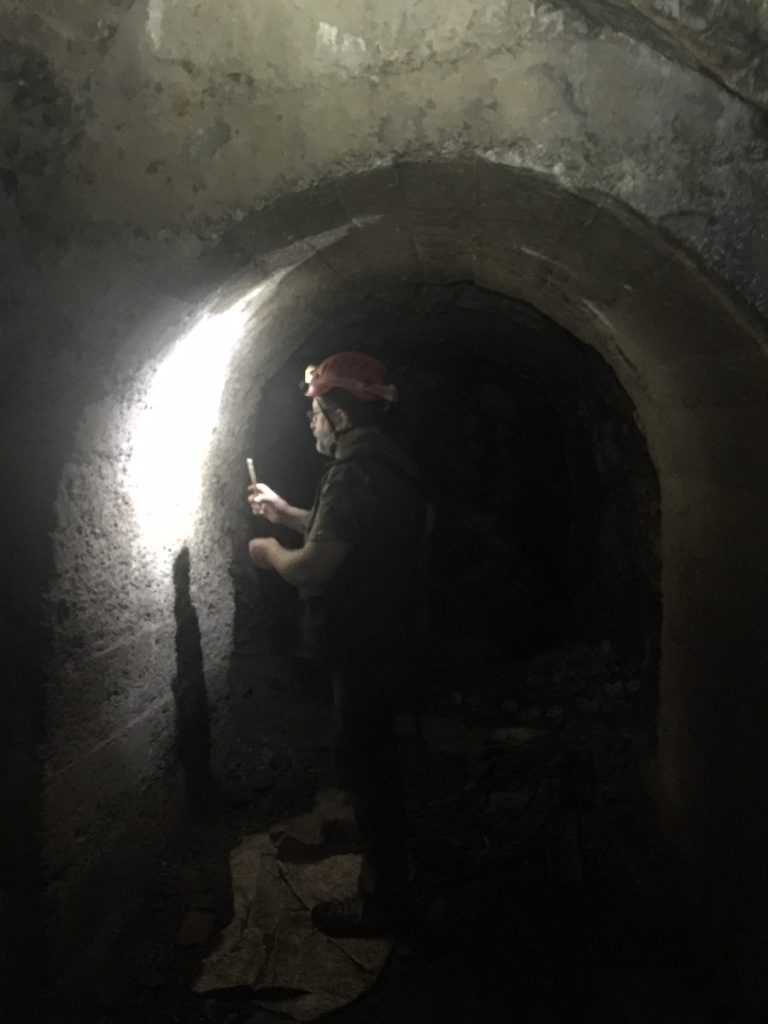
Continue on trail 3 and, before you reach a group of dilapidated stone houses – probably old army barracks – leave the path and take the narrow uphill trail on your left.
Climb it until you reach a circle of stones, possibly another water cistern, then follow the trail to your left, cross a low stone wall and begin your descent to the graniciari trail below. If you walk down in a straight line you will inevitably encounter the entrance to the cave.
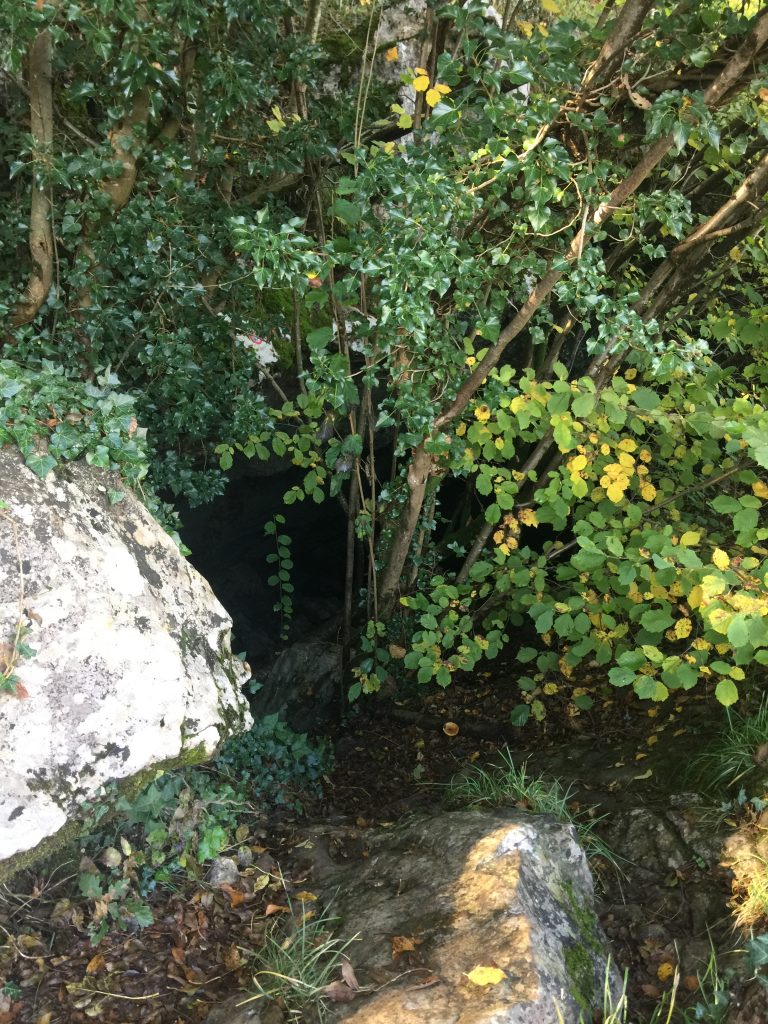
Don’t be intimidated by the darkness inside or the sudden flight of scared bats: you are in for a treat. Once the sunlight is gone, point your flashlight above your head and marvel at the golden walls of the cave.
They aren’t painted by man but made golden by the tiny bacteria mixed with water droplets. The reflection when you point your light is simply breathtaking – as if it were a precious mosaic inside an ancient church.
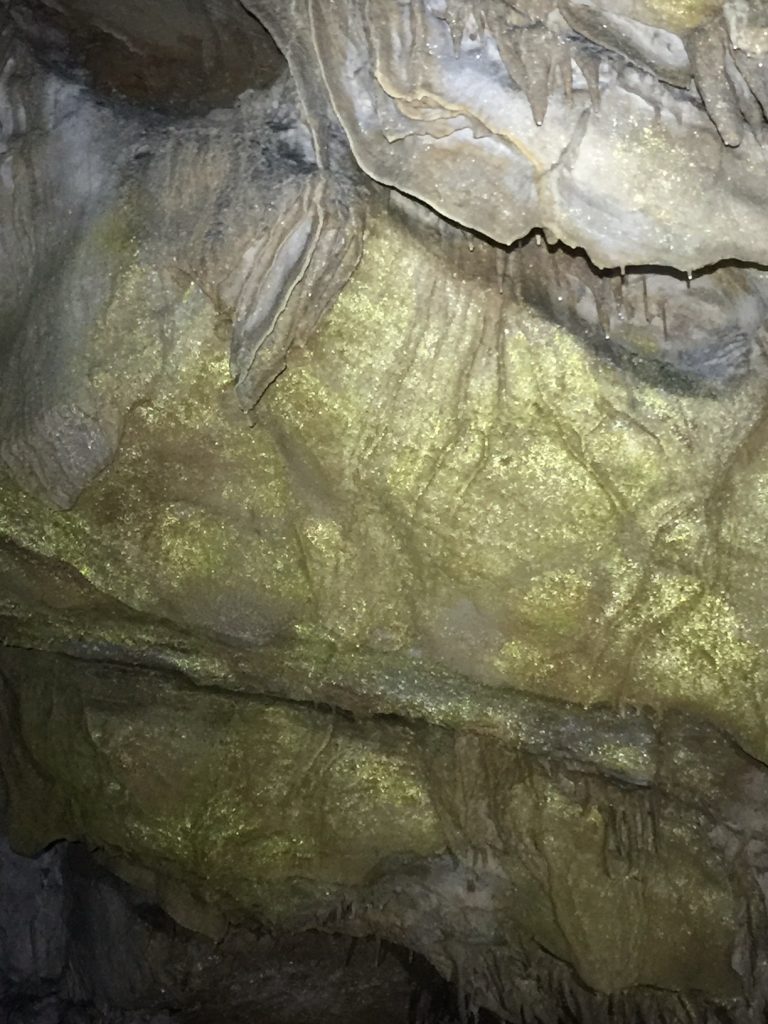
24 meters deep and a few hundred meters in length, this cave has more surprises for you. Go deeper into its belly and you will discover where its name comes from.
Among colorful stalactites and stalagmites you will reach two big halls separated by narrow slippery passages. In them, you will be able to enjoy several terraced shallow pools of crystal clear waters (look closely and you will see the little blind white cave shrimp swimming in them). Some deeper pools are filled with cool emerald waters, so inviting you almost wish you had brought your bathing suit and towel.

I will be forever grateful to my friend Andrea Colla, one of the most eminent entomologists in Italy, and Carso expert, for allowing me to discover and appreciate this beautiful place. And while he was busy looking for rare crawling creatures in the deepest corners of the dark cave, I entertained myself playing with the pure clay from an incredibly soft mound left there after an excavation. I decided to leave a talentless little trace of passage.
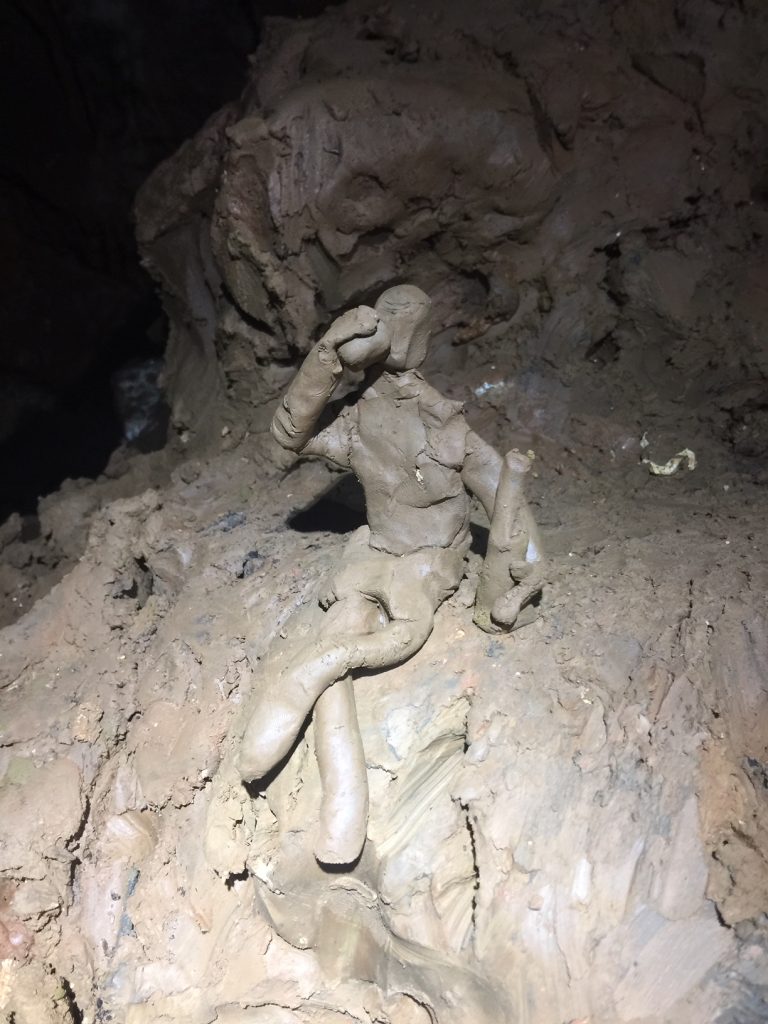
Although the water cave’s first official exploration dates back to1898 and was documented by the speleologists of Trieste’s Società Alpina delle Giulie, it had been probably used for centuries by local populations for precious water supplies in an area which geologically lacks rivers and lakes.
During World War I, between 1914 and 1917, the Austrian army considered using the cave for military purposes such as army barracks. They proceeded to some excavations but found clay layers (mounds of clay can be seen where excavations were started and then abandoned) too thick and deep to proceed further.
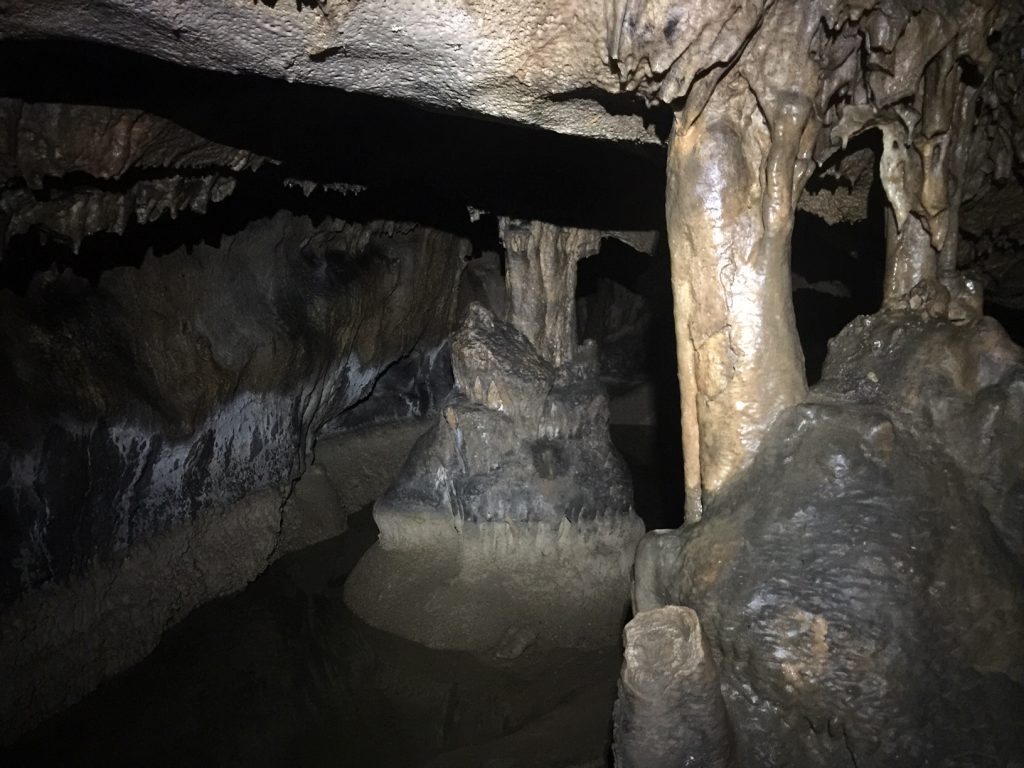
Once out, a longer walk along trail 3 will take you through beautiful Carso woods and abandoned old quarries. Here and there, you can appreciate the beauty of sumac, a unique bush that turns Carso bright red until mid-November.
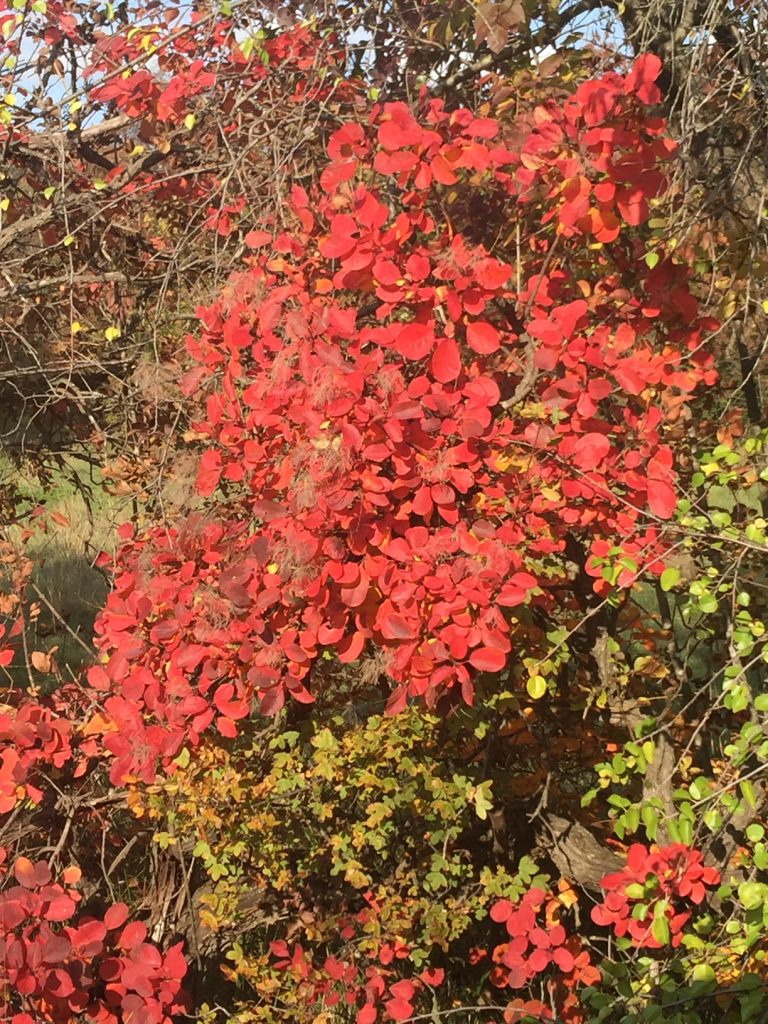






























Very interesting article, but I was very surprised to see this comment: “Because its entrance is literally a couple of meters away from the Slovenian border, along the line where the Iron Curtain separated the former Yugoslavia from Italy”.
Yugoslavia was a non-aligned country, and was emphatically not behind the Iron Curtain. Slovenia probably enjoyed better relations with Austria than Italy for historic reasons as well as their mutually non-aligned status, but the border with Italy was still just a national border.
Many Triestini got arrested by the Yugoslavian patrols And spent weeks in damp Jail cells for trespassing, often inadvertedly, with families on this side of the border trying to bribe Yugoslavian police to get them back.
Many got shot. Maybe not the iron curtain you have read about in History books, but definitely a clear separation East-West that Many people paid with their lives. The border was not just a national border. I’m surprised you would use such words. The tension was enormous. The city of Gorizia, like Berlin, was divided in two with a wall in the middle of the main road And barbed wire, checkpoints And machineguns on watchtowers. Not just a regulat border. Believe me.
Really enjoyed learning about another of the Carso’s unique features. My fam and I were born in Trieste, and I recall my Zias talking about how much they loved their jaunts to il Carso from the bustling citta d’Trieste. On one of my visits back my Zia brought us to see the beautiful Carso area. We lunched at a small family run farm restaurant, another unique Carso feature back at that time (1995).